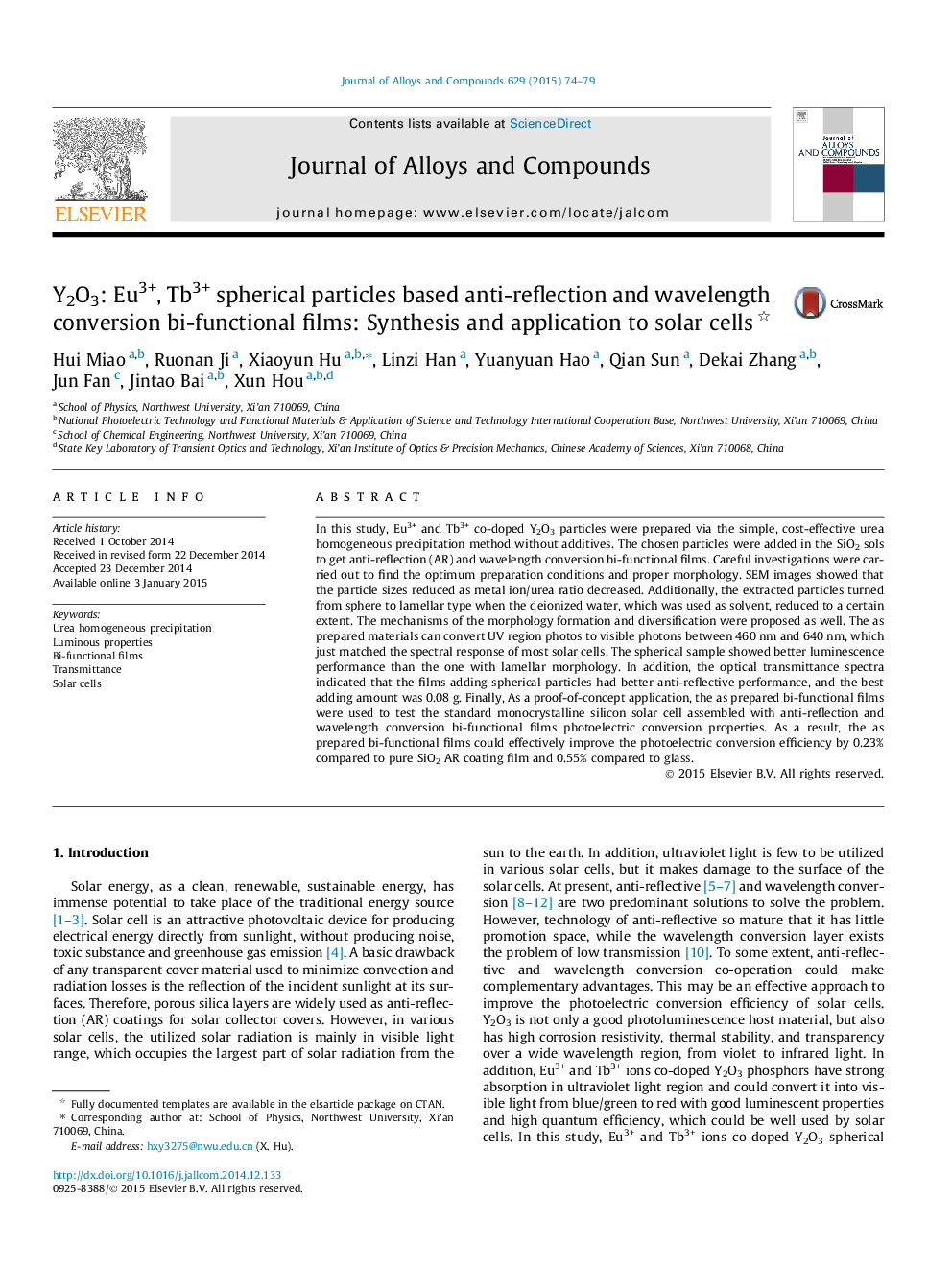| Article ID | Journal | Published Year | Pages | File Type |
|---|---|---|---|---|
| 1609717 | Journal of Alloys and Compounds | 2015 | 6 Pages |
Abstract
In this study, Eu3+ and Tb3+ co-doped Y2O3 particles were prepared via the simple, cost-effective urea homogeneous precipitation method without additives. The chosen particles were added in the SiO2 sols to get anti-reflection (AR) and wavelength conversion bi-functional films. Careful investigations were carried out to find the optimum preparation conditions and proper morphology. SEM images showed that the particle sizes reduced as metal ion/urea ratio decreased. Additionally, the extracted particles turned from sphere to lamellar type when the deionized water, which was used as solvent, reduced to a certain extent. The mechanisms of the morphology formation and diversification were proposed as well. The as prepared materials can convert UV region photos to visible photons between 460 nm and 640 nm, which just matched the spectral response of most solar cells. The spherical sample showed better luminescence performance than the one with lamellar morphology. In addition, the optical transmittance spectra indicated that the films adding spherical particles had better anti-reflective performance, and the best adding amount was 0.08 g. Finally, As a proof-of-concept application, the as prepared bi-functional films were used to test the standard monocrystalline silicon solar cell assembled with anti-reflection and wavelength conversion bi-functional films photoelectric conversion properties. As a result, the as prepared bi-functional films could effectively improve the photoelectric conversion efficiency by 0.23% compared to pure SiO2 AR coating film and 0.55% compared to glass.
Keywords
Related Topics
Physical Sciences and Engineering
Materials Science
Metals and Alloys
Authors
Hui Miao, Ruonan Ji, Xiaoyun Hu, Linzi Han, Yuanyuan Hao, Qian Sun, Dekai Zhang, Jun Fan, Jintao Bai, Xun Hou,
